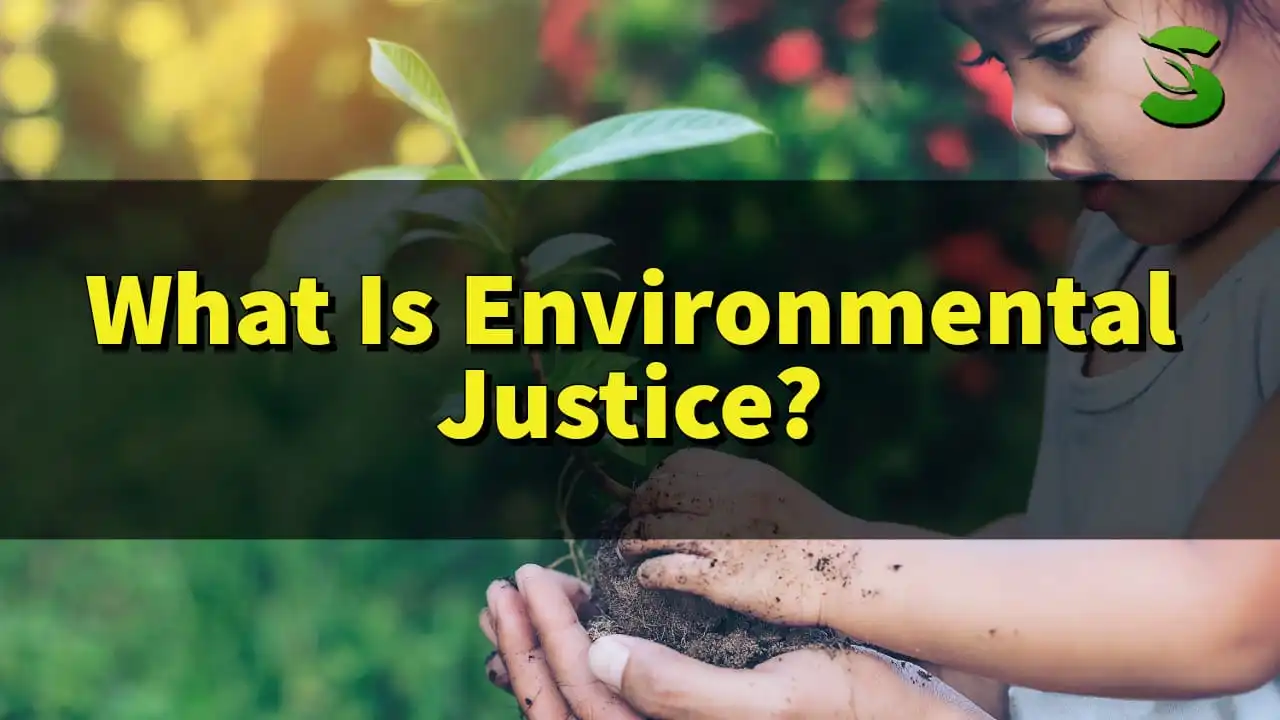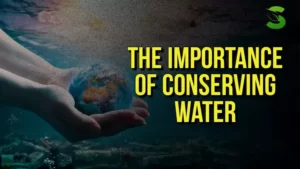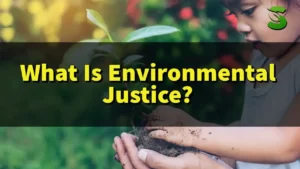In a world grappling with complex environmental challenges, the concept of environmental justice emerges as a guiding beacon toward a more equitable and sustainable future. Understanding what is environmental justice is crucial for addressing the intricate links between environmental concerns and social inequalities.
Unveiling the Layers of Environmental Justice
The Roots of Environmental Justice
Environmental justice refers to the fair treatment of people of all racial, ethnic, and socioeconomic backgrounds with respect to the development, implementation, and enforcement of environmental laws, regulations, and policies. It ensures that all communities have equal access to a clean and healthy environment, and that no community bears a disproportionate share of environmental hazards or risks. The roots of environmental justice can be traced back to various historical events, social movements, and key figures. Some of the most significant influences include:
- Civil Rights Movement: The struggle for racial equality in the United States during the 1950s and 1960s laid the groundwork for the environmental justice movement. The Civil Rights Movement highlighted the systemic discrimination faced by marginalized communities, which later influenced environmental activists to fight for equal treatment in environmental policy.
- Love Canal: The Love Canal disaster of the 1970s, in which a neighborhood in Niagara Falls, New York, was built on top of a toxic waste dump, brought national attention to the issue of environmental injustice. The predominantly low-income and predominantly African American community faced severe health problems and property damage due to the toxic waste.
- Warren County Protests: In 1982, the North Carolina Department of Natural Resources and Community Development proposed to dump 40,000 tons of PCB-laden soil in an landfill in predominantly African American Warren County. The local community organized protests, which led to the largest civil disobedience arrest in U.S. history. The incident further galvanized the environmental justice movement.
- United Church of Christ (UCC) Study: In 1987, the UCC commissioned a study that found that hazardous waste facilities were disproportionately located in communities of color and low-income areas. This report, titled “Toxic Wastes and Race,” brought national attention to the issue of environmental injustice and helped to frame the debate around the unequal distribution of environmental hazards.
- First National People of Color Environmental Leadership Summit: Held in 1991, this summit brought together environmental justice activists and leaders from various racial and ethnic backgrounds. The summit resulted in the creation of the Principles of Environmental Justice, which serve as the foundation for the environmental justice movement.
- Executive Order 12898: In 1994, President Bill Clinton signed Executive Order 12898, which requires federal agencies to consider environmental justice in their decision-making processes. This marked the first time that the U.S. government officially acknowledged the issue of environmental injustice.
These events and developments have played crucial roles in shaping the environmental justice movement, which continues to fight for equal treatment and access to a clean and healthy environment for all communities.
Defining Environmental Justice
Environmental justice is a concept that addresses the fair and equitable treatment of all people with respect to the development, implementation, and enforcement of environmental laws, regulations, and policies. It also aims to ensure that no community bears a disproportionate share of the negative environmental impacts, such as pollution, waste disposal, and hazardous facilities.
The concept of environmental justice emerged in the late 20th century in response to the observation that marginalized communities, such as those of color and low-income, were disproportionately exposed to environmental hazards and had limited access to environmental benefits. The principle of environmental justice seeks to eliminate these disparities and ensure that all communities have the opportunity to live in a healthy and sustainable environment.
Environmental justice encompasses a range of issues, including:
- Air quality: Ensuring that all communities have clean air and are not subjected to disproportionate levels of pollution.
- Water quality: Ensuring that all communities have access to clean and safe drinking water, and are not exposed to contaminated water sources.
- Waste disposal: Ensuring that waste facilities, such as landfills and incinerators, are not located in marginalized communities, and that waste management practices are environmentally sound.
- Environmental hazards: Ensuring that communities are not disproportionately exposed to environmental hazards, such as toxic chemicals or hazardous materials.
- Access to green spaces: Ensuring that all communities have access to parks, open spaces, and other natural areas for recreation and well-being.
- Climate change: Addressing the inequitable impacts of climate change on communities, particularly those that are vulnerable due to their geographic location, economic status, or other factors.
Environmental justice is a critical issue that requires ongoing attention and action from policymakers, environmental organizations, and communities themselves. By promoting environmental justice, we can work towards a more equitable and sustainable future for all.
Environmental Justice vs. Environmental Racism
Environmental justice and environmental racism are related concepts, but they have distinct meanings and focus on different aspects of environmental inequity.
Environmental justice, as previously mentioned, refers to the fair and equitable treatment of all people with respect to the development, implementation, and enforcement of environmental laws, regulations, and policies. It aims to ensure that no community bears a disproportionate share of the negative environmental impacts and that all communities have access to environmental benefits.
Environmental racism, on the other hand, is a specific form of environmental injustice that occurs when racial or ethnic minorities bear a disproportionate share of the negative environmental impacts, such as pollution, waste disposal, and hazardous facilities. It involves the deliberate or unconscious placement of polluting or hazardous facilities in communities of color, resulting in unequal exposure to environmental hazards and a lower quality of life.
The term “environmental racism” emphasizes the role of race or ethnicity in the creation and perpetuation of environmental injustices. It highlights the systemic and institutional factors that contribute to the disproportionate burden of environmental hazards on communities of color. This concept has gained traction in the environmental justice movement as a way to bring attention to the intersection of race, environment, and social justice.
In summary, environmental justice focuses on the broader concept of fair and equitable treatment in environmental matters, while environmental racism specifically addresses the role of race or ethnicity in the creation of environmental disparities. Both concepts are interconnected and play a crucial role in addressing environmental disparities and promoting social justice.
Examples of Environmental Injustices
Environmental injustices are numerous and affect communities around the world. Here are some notable examples:
- Love Canal, New York, USA: In the 1940s and 1950s, a hazardous waste dump was established in a low-income, predominantly African American neighborhood called Love Canal. Residents faced serious health issues and property devaluation due to the contamination. The situation led to the passage of the Comprehensive Environmental Response, Compensation, and Liability Act (CERCLA) in 1980, also known as the Superfund, which aims to clean up abandoned or uncontrolled hazardous waste sites.
- Warren County, North Carolina, USA: In 1982, a predominantly African American county was chosen as the site for a PCB (polychlorinated biphenyl) landfill. This led to widespread contamination of the watershed and health issues for residents. The incident became known as the “Toxic Turkey” and sparked a 30-day protest by activist Reverend Benjamin Chavis and others, ultimately leading to the closure of the landfill.
- Claremont Landfill, South Africa: In the early 2000s, a hazardous waste landfill was established near the township of Lavender Hill in Cape Town, South Africa. The predominantly African and low-income community was exposed to toxic waste, leading to health problems and environmental degradation. The landfill was eventually closed following community protests and legal action.
- Chester, Pennsylvania, USA: The Lowndes Park neighborhood of Chester, a predominantly African American and low-income area, has been referred to as “Cancer Alley” due to its proximity to several polluting industries. Residents have faced high rates of cancer and other health issues, as well as air and water pollution.
- Lianhua Road Wastewater Plant, Beijing, China: In 2016, thousands of residents protested after the local government planned to relocate a wastewater treatment plant from a wealthy district to a poorer, predominantly migrant neighborhood. The proposed relocation was seen as an example of environmental injustice, as the poor and marginalized community would bear the burden of the pollution.
- Ogoniland, Nigeria: Chevron, Shell, and other oil companies have operated in Ogoniland since the 1950s, causing significant environmental damage, including oil spills, pollution of water sources, and destruction of farmland. The local Ogoni people, who are predominantly of Ijaw ethnicity, have faced severe health and economic consequences due to these environmental issues.
These examples demonstrate the ongoing issue of environmental injustice, where marginalized communities are disproportionately affected by environmental hazards and have less access to environmental benefits. The fight for environmental justice continues as activists, communities, and policymakers work to address these disparities and create a more equitable and sustainable future for all.
Navigating the Terrain of Environmental Policies
Environmental Justice Policies Worldwide
Environmental justice policies aim to address and rectify the disparities in environmental impacts and benefits that disproportionately affect marginalized communities. These policies vary by country but often share common goals and strategies. Here are some examples of environmental justice policies from around the world:
- United States: The United States has several policies and laws that promote environmental justice, such as the Comprehensive Environmental Response, Compensation, and Liability Act (CERCLA or Superfund), the National Environmental Policy Act (NEPA), and the Civil Rights Act of 1964. Additionally, Executive Order 12898 on “Federal Actions to Address Environmental Justice in Minority Populations and Low-Income Populations” was signed in 1994, directing federal agencies to identify and address environmental justice issues in their policies and programs.
- Canada: In 2019, the Canadian government released the Environmental and Social Impact Assessment Act, which aims to improve the assessment process for major projects, including considerations for environmental justice and Indigenous rights. Furthermore, the Government of Canada has developed a Federal Framework for Environmental Decision-Making, which includes the commitment to consider gender, diversity, and Indigenous peoples’ perspectives in decision-making processes.
- South Africa: The South African government has incorporated environmental justice principles into its Constitution and national policies. The National Environmental Management Act (NEMA) requires environmental impact assessments to consider the potential impacts on vulnerable and disadvantaged communities. Additionally, the National Development Plan (NDP) aims to address environmental inequalities and promote sustainable development for all citizens.
- European Union: The EU has adopted several policies and directives that promote environmental justice, such as the Strategic Environmental Assessment (SEA) Directive, the Environmental Impact Assessment (EIA) Directive, and the Waste Framework Directive. These policies require that environmental considerations be integrated into decision-making processes at all levels, with attention to potential disparities in environmental impacts across communities.
- India: In 2006, the Indian government introduced the National Policy on Environment and Development of Environment Infrastructure, which emphasizes the importance of environmental justice and equity in environmental management. The policy recognizes the need to address the environmental concerns of marginalized communities and to ensure that they have equal access to a healthy and sustainable environment.
- Australia: The Australian government has implemented various policies and laws to promote environmental justice, such as the Environment Protection and Biodiversity Conservation Act (EPBC Act) and the National Environmental Health Strategy. These policies aim to address environmental disparities and ensure that all communities have equal opportunities to enjoy a healthy environment.
While these policies vary in their scope and focus, they share a common goal of addressing environmental disparities and promoting equitable access to a healthy and sustainable environment for all citizens. Environmental justice policies often involve collaborative efforts between governments, NGOs, and communities to ensure that marginalized voices are heard and considered in decision-making processes.
Grassroots Movements and Their Impact
Grassroots movements are collective actions initiated by individuals, communities, or organizations from the bottom up, often in response to social, environmental, or political issues. These movements can have a significant impact on raising awareness, influencing policies, and bringing about change. Here are some examples of grassroots movements and their impact:
- Environmental Justice Movement, USA: The environmental justice movement emerged in the late 20th century in response to the disproportionate exposure of marginalized communities to environmental hazards. Grassroots organizations like the Environmental Justice Movement in Louisiana and the Ruckus Society have campaigned for the fair treatment of all communities with respect to environmental laws, regulations, and policies. These movements have led to the establishment of environmental justice programs in federal and state agencies, as well as legislation such as Executive Order 12898 on “Federal Actions to Address Environmental Justice in Minority Populations and Low-Income Populations” (1994).
- Standing Rock Protests, USA: The Standing Rock protests (2016-2017) were a series of demonstrations against the construction of the Dakota Access Pipeline (DAPL) near the Standing Rock Sioux Tribal lands. The movement, led by the Indigenous-led group Dakota Access Pipeline Resistance and the community of Standing Rock, gained international attention and support. While the pipeline was ultimately completed, the movement led to increased awareness of Indigenous rights and environmental issues, as well as changes in policies regarding tribal consultation and environmental review.
- Fridays for Future/Youth Climate Strikes, Global: Initiated by Greta Thunberg in 2018, the Fridays for Future movement encourages young people to protest against climate change inaction by their governments. The movement has inspired millions of students worldwide to participate
The Role of Individuals in Environmental Justice
Everyday Actions for Environmental Justice
While large-scale environmental justice policies and movements are crucial, individuals can also contribute to the cause through everyday actions. Here are some ways you can promote environmental justice in your daily life:
- Educate yourself and others: Stay informed about environmental justice issues and share information with others to raise awareness. Understand how environmental problems disproportionately affect marginalized communities and advocate for equitable solutions.
- Vote and engage in the political process: Use your vote to support candidates who prioritize environmental justice. Engage with local, regional, and national policymakers to voice your concerns and advocate for equitable policies.
- Support local and sustainable businesses: Choose to buy from businesses that prioritize sustainability and fair labor practices. By supporting companies that prioritize the environment and social equity, you can help create a demand for more responsible practices.
- Advocate for environmental justice in your community: Engage with local environmental groups, attend public meetings, and participate in decision-making processes that affect your community’s environment. This can include speaking out against the placement of hazardous facilities in marginalized neighborhoods or supporting the development of green spaces.
- Reduce your environmental footprint: Adopt sustainable practices in your daily life, such as reducing waste, conserving energy, and using public transportation or carpooling. By living more sustainably, you can help reduce the environmental burden on marginalized communities that are often disproportionately affected by pollution and waste.
- Donate to or volunteer with environmental justice organizations: Support the work of organizations that are dedicated to promoting environmental justice by making a financial contribution or volunteering your time and skills.
- Encourage diversity and inclusion in environmental
Education and Awareness
Education and awareness play a significant role in promoting environmental justice. By increasing understanding and knowledge of environmental issues and their impact on marginalized communities, we can foster greater empathy, engagement, and action. Here are some ways to raise education and awareness about environmental justice:
- Teach about environmental justice in schools: Incorporate environmental justice topics into curricula at all educational levels. This can include discussing the historical and current challenges faced by marginalized communities, as well as empowering students to take action in their own communities.
- Host workshops or community events: Organize workshops, seminars, or community events to educate people about environmental justice issues. Invite experts or community leaders to speak, and facilitate discussions to encourage participants to share their perspectives and ideas.
- Use social media and online platforms: Utilize social media, blogs, and other online platforms to share information and resources about environmental justice. Use hashtags like #EnvironmentalJustice, #ClimateJustice, and #EJMovement to connect with others interested in the topic.
- Create educational materials: Develop brochures, infographics, videos, or other educational materials that explain environmental justice concepts and issues. Distribute these materials through community centers, libraries, or online platforms to reach a wide audience.
- Collaborate with businesses and organizations: Partner with businesses, non-profits, and community organizations to raise awareness about environmental justice. This can involve hosting joint events, creating educational campaigns, or integrating environmental justice into existing initiatives.
- Tell stories and share experiences: Personal stories and firsthand experiences can be powerful tools for raising awareness about environmental justice. Share stories from affected communities, and encourage others to do the same. This can help humanize the issue and foster empathy and understanding.
- Promote environmental justice through multiple lenses: Recognize that environmental justice is interconnected with other social justice issues, such as racial justice, gender equity, and economic inequality. By addressing these intersections, we can create a more comprehensive understanding of environmental justice and its implications.
FAQ’s: Demystifying Environmental Justice
Q: How does environmental justice differ from environmental sustainability?
A: While environmental sustainability focuses on preserving ecological balance, environmental justice specifically addresses the fair distribution of environmental benefits and burdens.
Q: Are there success stories in achieving environmental justice?
A: Yes, instances like the closure of hazardous waste sites in marginalized communities showcase successful strides in achieving environmental justice.
Q: How can businesses contribute to environmental justice?
A: Businesses can promote environmental justice by adopting sustainable practices, ensuring fair labor conditions, and actively engaging with local communities.
Q: Is environmental justice a global concern?
A: Absolutely, environmental justice is a universal concern, transcending borders, as communities worldwide grapple with the interconnectedness of environmental and social issues.
Q: Can individuals make a difference in environmental justice?
A: Yes, individuals play a pivotal role through advocacy, sustainable choices, and holding policymakers accountable for equitable environmental practices.
Q: What challenges hinder the progress of EJ?
A: Challenges include systemic inequalities, lack of awareness, and the need for comprehensive policy reforms to address the root causes of environmental injustices.
Conclusion
In conclusion, EJ is a crucial concept that addresses the fair and equitable treatment of all people in relation to environmental policies, laws, and practices. It seeks to ensure that no community bears a disproportionate share of the negative environmental impacts and that all communities have access to environmental benefits. By understanding and addressing the systemic disparities that contribute to environmental injustices, we can work towards a more sustainable and equitable future for all.
Grassroots movements, educational initiatives, and individual actions all play a vital role in promoting environmental justice. By raising awareness, advocating for equitable policies, and adopting sustainable practices, we can help create a world where all communities can enjoy a clean and healthy environment. The journey towards environmental justice requires ongoing effort, collaboration, and commitment from individuals, communities, and governments around the globe.
ALSO READ | Steel Bottles: A Sustainable Solution for Drinking Water








2 thoughts on “What Is Environmental Justice?”